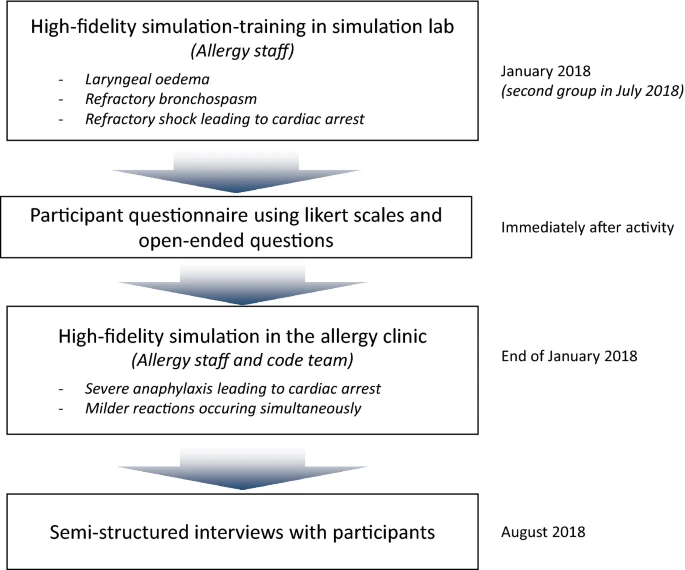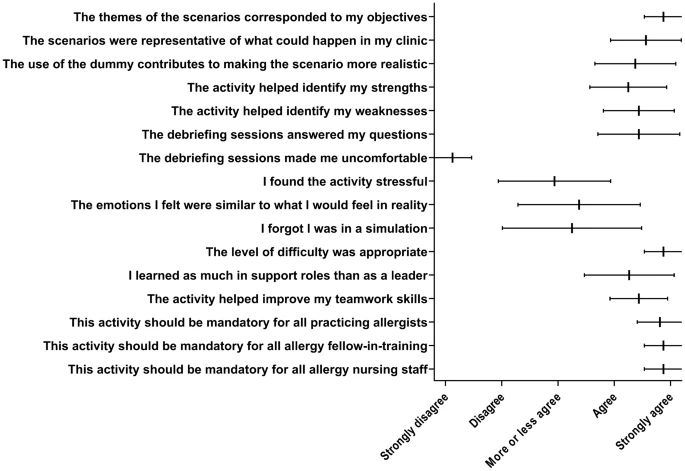Research - Open Access
Ana M. Copaescu, Francois Graham, Nathalie Nadon, Rémi Gagnon, Arnaud Robitaille, Mohamed Badawy, David Claveau, Anne Des Roches, Jean Paradis, Matthieu Vincent & Philippe Bégin . Allergy, Asthma & Clinical Immunology volume 19, Article number: 9 (2023)
Abstract
Background
High-fidelity simulations based on real-life clinical scenarios have frequently been used to improve patient care, knowledge and teamwork in the acute care setting. Still, they are seldom included in the allergy-immunology curriculum or continuous medical education. Our main goal was to assess if critical care simulations in allergy improved performance in the clinical setting.
Methods
Advanced anaphylaxis scenarios were designed by a panel of emergency, intensive care unit, anesthesiology and allergy-immunology specialists and then adapted for the adult allergy clinic setting. This simulation activity included a first part in the high-fidelity simulation-training laboratory and a second at the adult allergy clinic involving actors and a high-fidelity mannequin.
Participants filled out a questionnaire, and qualitative interviews were performed with staff after they had managed cases of refractory anaphylaxis.Results
Four nurses, seven allergy-immunology fellows and six allergy/immunologists underwent the simulation. Questionnaires showed a perceived improvement in aspects of crisis and anaphylaxis management. The in-situ simulation revealed gaps in the process, which were subsequently resolved. Qualitative interviews with participants revealed a more rapid and orderly response and improved confidence in their abilities and that of their colleagues to manage anaphylaxis.
Conclusion
High-fidelity simulations can improve the management of anaphylaxis in the allergy clinic and team confidence. This activity was instrumental in reducing staff reluctance to perform high-risk challenges in the ambulatory setting, thus lifting a critical barrier for implementing oral immunotherapy at our adult center.


No comments:
Post a Comment